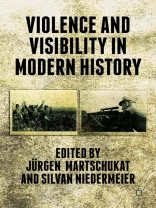Despite the claims of Steven Pinker and others, violence has remained a historical constant since the Enlightenment, even though its forms and visibility have been radically transformed. Accordingly, the studies gathered here recast debate over violence in modern societies by undermining teleological and reassuring narratives of progress.
Daftar Isi
1. Violence and Visibility: Historical and Theoretical Perspectives; Jürgen Martschukat and Silvan Niedermeier 2. Torture By Any Other Name: Prelude to Guantanamo; Colin Dayan PART I: VISIBILITIES OF CRIME, POLICING, AND PUNISHMENT 3. The Visibility of Torture in Collections of 19th Century Case Studies; Thomas Weitin 4. Changing Representations of Scandalous Murders in the United States; Bruce Dorsey 5. The Power of Indifference: Violence, Visibility, and Invisibility in the New York City Race Riot of 1900; Martha Hodes 6. Violence, Visibility, and the Investigation of Torture in the American South, 1940-1955; Silvan Niedermeier 7. The ‘Vicarious Play’ of Lynching Melodramas: Cinema and Mob Violence in the United States, 1895-1905; Amy Louise Wood 8. Picturing Exclusion: Race, Honor, and Anti-Semitic Violence in Nazi Germany before the Second World War; Michael Wildt PART II: VISIBILITIES OF WARFARE 9. Life and Death in Peep Boxes: Bringing the Civil War to the American Home; Annette Jael Lehmann 10. Images of Violence in Wehrmacht Soldiers’ Private Photo Albums; Petra Bopp 11. Making Photographs Historic: The Use of Historical Black-And-White Stills in NBC’s Fictional Miniseries Holocaust; Jan Taubitz 12. Shiny Happy Warfare?: New York Victory Parades and the (In)Visibility of Violence; Sebastian Job 13. Violence and Historical Reenactment: From the American Civil War to the Moore’s Ford Lynching; Dora Apel
Tentang Penulis
Colin Dayan, Vanderbilt University, USA Thomas Weitin, University of Konstanz, Germany Bruce Dorsey, Swarthmore College, USA Martha Hodes, New York University, USA Amy Louise Wood, Illinois State University, USA Michael Wildt, Humboldt University, Germany Annette Jael Lehmann, Freie Universität Berlin, Germany Petra Bopp, University of Jena, Germany Jan Taubitz, University of Erfurt, Germany Sebastian Jobs, University of Sydney, Australia Dora Apel, Wayne State University, USA












